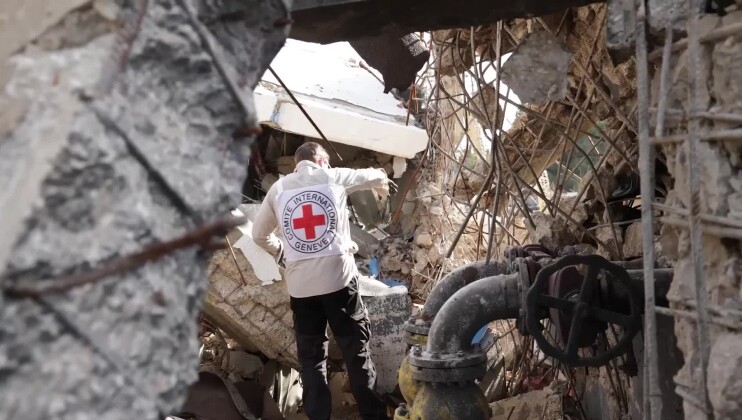Gaza: Cannot rebuild with emergency aid alone
Since the January 18 ceasefire in Gaza, the full extent of the destruction is becoming clearer. Three weeks of intense conflict have taken a heavy toll on civilians who are still mourning their dead and searching for possessions in the shattered ruins of their homes.
In Shijaiya, one of the poorest residential areas of Gaza City, Leila Al-Helou goes back to the wreckage of her home which she and her family had built over the past 20 years. The upper floors have been completely destroyed.
ICRC teams assess the damage in this neighbourhood. They have helped replace windows, doors and roofs for more than 15,000 people in Gaza city, but Leila al-Helou's home is beyond such repair. Leila and her family are staying with relatives while they decide what to do next. But over 18,000 people who have lost their homes are staying in UNRWA temporary shelters.
Like many residents, Leila wants more than the reconstruction of her old home, "What we need most is security," she insists.
ICRC and Palestinian Red Crescent Society workers give out emergency aid and have started work on some of the Strip's shattered infrastructure. Antoine Grand, head of the ICRC office in Gaza has been in the Strip throughout the conflict. He believes that it will take more than emergency aid for people in Gaza to recover from the crisis and live a normal life. As well as repairs and restoration, economic recovery is essential but, "three weeks of war after one and half years of embargo .. will make it very hard to recover."
In areas including Sudania, Beit Lahiya and Zaytun in Gaza city, water and power supplies systems have been severely damaged. The Ministry of Health reports that one fifth of the population of the Gaza Strip has no direct access to drinking water. Drains and sewage systems have also been badly damaged. Repairs are under way at the Sheikh Ajleen sewage treatment plant in the centre of the Gaza Strip which treats raw sewage for about 400,000 people. It was severely damaged when it was hit during the second week of conflict. Raw sewage pours into rivers, into residential areas and into the Mediterranean sea posing a threat to public health as well as the environment.
In the north of the strip, where electricity networks suffered major damage during the conflict, households receive power for only six hours a day. Power generators are provided by ICRC to pumping stations for three water wells with no power supply in Khan Yunis, south of the Strip.
SHOTLIST ATTACHED



